British Virgin Islands
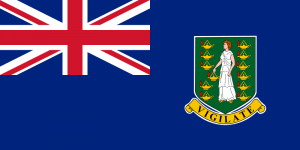
Denmark, the Virgin Islands, and Reparations for Slavery
Compiled by the media team of the African-Caribbean Reparations and Resettlement Alliance (ACRRA) http://www.acrra.org, this short, informative documentary video highlights the historical relationship between Denmark, the Danish West Indies colony, and now, the U.S. Virgin Islands and the associated human tragedy. Featuring footage from a number of events organized by the Virgin Islands Reparations Movement, this video makes a very compelling argument for slavery reparations.
The Virgin Islands, commonly known as the British Virgin Islands (BVI), is a British overseas territory located in the Caribbean to the east of Puerto Rico. The islands make up part of the Virgin Islands archipelago, the remaining islands constitute the US Virgin Islands and the Spanish Virgin Islands.
The official name of the Territory is still simply the “Virgin Islands”, but the prefix “British” is often used to distinguish it from the neighbouring American territory which changed its name from the “Danish West Indies” to “Virgin Islands of the United States” in 1917. British Virgin Islands government publications continue to begin with the name “The Territory of the Virgin Islands”, passports simply refer to the “Virgin Islands”, and all laws begin with the words “Virgin Islands”. Moreover, the Territory’s Constitutional Commission has expressed the view that “every effort should be made”, to encourage the use of the name “Virgin Islands.”
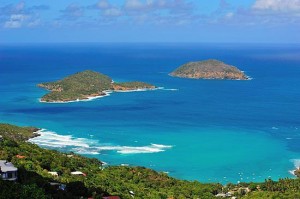 The British Virgin Islands consist of the main islands of Tortola, Virgin Gorda,Anegada, and Jost Van Dyke, along with over fifty other smaller islands and cays. About 15 of the islands are inhabited. The capital, Road Town, is situated on Tortola, the largest island, which is approximately 20 km (12 mi) long and 5 km (3 mi) wide. The islands have a population of about 27,800, of whom approximately 23,000 live on Tortola.
The British Virgin Islands consist of the main islands of Tortola, Virgin Gorda,Anegada, and Jost Van Dyke, along with over fifty other smaller islands and cays. About 15 of the islands are inhabited. The capital, Road Town, is situated on Tortola, the largest island, which is approximately 20 km (12 mi) long and 5 km (3 mi) wide. The islands have a population of about 27,800, of whom approximately 23,000 live on Tortola.
British Virgin Islanders are classed as British Overseas Territories citizens and since 2002 have had full British citizenship. Although the territory is not part of the European Union and not directly subject to EU law, its citizens are deemed to be citizens of the EU as well.
History of the British Virgin Islands
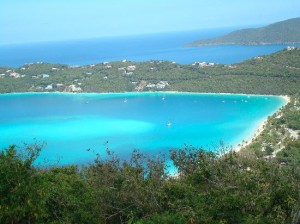 The Virgin Islands were first settled by the Arawak from South America around 100 BC (though there is some evidence of Amerindian presence on the islands as far back as 1500 BC). The Arawaks inhabited the islands until the 15th century when they were displaced by the more aggressive Caribs, a tribe from the Lesser Antilles islands, after whom the Caribbean Sea is named.
The Virgin Islands were first settled by the Arawak from South America around 100 BC (though there is some evidence of Amerindian presence on the islands as far back as 1500 BC). The Arawaks inhabited the islands until the 15th century when they were displaced by the more aggressive Caribs, a tribe from the Lesser Antilles islands, after whom the Caribbean Sea is named.
The first European sighting of the Virgin Islands was by Christopher Columbus in 1493 on his second voyage to the Americas. Columbus gave them the fanciful name Santa Ursula y las Once Mil Vírgenes (Saint Ursula and her 11,000 Virgins), shortened to Las Vírgenes (The Virgins), after the legend of Saint Ursula.
The Spanish Empire claimed the islands by discovery in the early 16th century, but never settled them, and subsequent years saw the English, Dutch, French, Spanish, and Danish all jostling for control of the region, which became a notorious haunt for pirates. There is no record of any native Amerindian population in the British Virgin Islands during this period, although the native population on nearby Saint Croix was decimated.
The Dutch established a permanent settlement on the island of Tortola by 1648. In 1672, the English captured Tortola from the Dutch, and the English annexation of Anegada and Virgin Gorda followed in 1680. Meanwhile, over the period 1672–1733, the Danish gained control of the nearby islands of Saint Thomas, Saint John and Saint Croix.
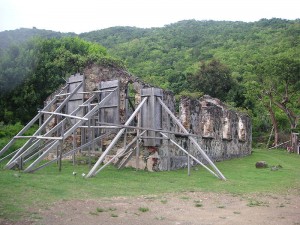 The ruins of St Phillip’s Church, Tortola, one of the most important historical ruins in the Territory.
The ruins of St Phillip’s Church, Tortola, one of the most important historical ruins in the Territory.
The British islands were considered principally a strategic possession, but were planted when economic conditions were particularly favourable. The British introduced sugar cane which was to become the main crop and source of foreign trade, and slaves were brought from Africa to work on the sugar cane plantations. The islands prospered economically until the middle of the nineteenth century, when a combination of the abolition of slavery in the Territory, a series of disastrous hurricanes, and the growth in the sugar beet crop in Europe and the United States significantly reduced sugar cane production and led to a period of economic decline.
In 1917, the United States purchased St. John, St. Thomas, and St. Croix from Denmark for US$25 million, renaming them the United States Virgin Islands.
The British Virgin Islands were administered variously as part of the British Leeward Islandsor with St. Kitts and Nevis, with an administrator representing the British Government on the Islands. The island gained separate colony status in 1960 and became autonomous in 1967. Since the 1960’s, the islands have diversified away from their traditionally agriculture-based economy towards tourism and financial services, becoming one of the wealthiest areas in the Caribbean.
Geography
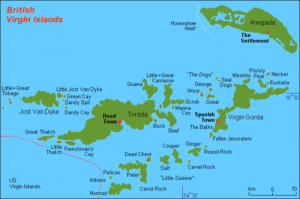 Map of British Virgin Islands (Note: Anegada is farther away from the other islands than shown). Geography of the British Virgin Islands
Map of British Virgin Islands (Note: Anegada is farther away from the other islands than shown). Geography of the British Virgin Islands
The British Virgin Islands comprise around sixty tropical Caribbean islands, ranging in size from the largest, Tortola 20 km (12 mi) long and 5 km (3 mi) wide, to tiny uninhabited islets. They are located in the Virgin Islands archipelago, a few miles east of the US Virgin Islands. The North Atlantic Ocean lies to the north of the islands, and the Caribbean Sea lies to the south. Most of the islands are volcanic in origin and have a hilly, rugged terrain. Anegada is geologically distinct from the rest of the group and is a flat island composed of limestone and coral.
In addition to the four main islands of Tortola, Virgin Gorda, Anegada, and Jost Van Dyke, other islands include:
|
|


